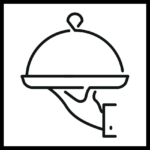5301.0707 Discipline
Effective discipline is an essential part of leadership. It ensures accountability, maintains standards, and fosters a respectful work environment. However, discipline must be approached thoughtfully, balancing firmness with fairness. Knowing when and how to discipline teams or individuals can strengthen team cohesion and enhance performance, while mishandling it can damage morale and trust.
When to Discipline
Discipline should be applied in situations where behavior or performance significantly deviates from expected standards. It’s crucial to identify whether the issue arises from a lack of understanding, external factors, or willful misconduct. Below are common scenarios that warrant discipline:
- Repeated Policy Violations:
- Example: Consistently arriving late, ignoring safety protocols, or failing to follow standard operating procedures.
- Why It Matters: These actions can disrupt workflow, endanger others, or undermine team morale.
- Performance Issues:
- Example: Regularly missing deadlines, producing substandard work, or not meeting agreed-upon goals.
- Why It Matters: Poor performance affects the team’s ability to meet objectives and sets a bad precedent.
- Disrespectful Behavior:
- Example: Harassment, bullying, or insubordination.
- Why It Matters: Such behavior damages team relationships and creates a toxic work environment.
- Team Dynamics Challenges:
- Example: Persistent conflict between team members or refusal to collaborate.
- Why It Matters: Tensions and lack of cooperation can derail team efforts.
How to Discipline Effectively
- Act Promptly but Thoughtfully:
- Address issues as soon as possible to prevent them from escalating. However, take time to gather facts and assess the situation before taking action.
- Example: If a team member repeatedly fails to complete tasks, discuss the issue the same day but come prepared with specific examples.
- Be Specific and Objective:
- Focus on the behavior or performance issue, not the person. Use factual language and avoid emotional or accusatory tones.
- Example: Instead of saying, “You’re lazy,” say, “You’ve missed three deadlines this week, which has delayed the project.”
- Use a Private Setting:
- Discipline should be handled privately to maintain respect and confidentiality.
- Example: Speak with the individual in a quiet office rather than addressing the issue in front of the entire team.
- Communicate Clear Expectations:
- Reiterate the expected behavior or standard and explain the consequences of failing to meet them.
- Example: “Moving forward, arriving late will result in a formal warning. We expect you to be ready to start at 9:00 AM sharp.”
- Offer Support and Solutions:
- Address potential underlying causes and offer support, such as training, resources, or adjustments to workload.
- Example: “Is there a reason you’ve been struggling to meet deadlines? Let’s discuss how we can help you improve.”
- Document the Process:
- Keep detailed records of disciplinary actions, including dates, specific issues, and steps taken to address them. This protects both the leader and the organization in case of disputes.
Disciplining Teams
When addressing issues that involve the entire team, discipline should focus on collective responsibility rather than singling out individuals (unless warranted).
Steps for Team Discipline:
- Identify the Root Cause:
- Example: A drop in team performance could stem from unclear expectations or resource shortages rather than laziness.
- Hold a Group Discussion:
- Example: “Our last event didn’t meet quality standards because we weren’t coordinating effectively. Let’s review our roles and processes.”
- Reinforce Team Accountability:
- Example: Set team goals and clarify the consequences of failing to meet them, ensuring everyone understands their role in achieving success.
- Monitor Progress:
- Example: Schedule regular check-ins to assess whether the team is improving and provide additional guidance if needed.
When to Escalate Discipline
In cases where initial efforts to correct behavior or performance fail, escalating the disciplinary process may be necessary. Examples include:
- Issuing a formal written warning.
- Implementing a performance improvement plan (PIP) with clear, measurable goals.
- In severe cases, involving human resources for potential suspension or termination.
Balancing Discipline with Leadership
Discipline should not be punitive but corrective and constructive. Leaders who discipline effectively:
- Maintain Consistency:
- Ensure all team members are held to the same standards, avoiding favoritism or bias.
- Model Accountability:
- Set an example by adhering to the same standards expected of the team.
- Focus on Growth:
- Frame discipline as an opportunity to improve, not as a punishment.
Common Mistakes to Avoid
- Ignoring Issues:
- Allowing bad behavior to go unaddressed can create resentment among team members who follow the rules.
- Overreacting:
- Responding too harshly to minor infractions can damage morale and trust.
- Lack of Follow-Up:
- Failing to monitor progress after discipline reduces its effectiveness and may lead to repeated issues.
Discipline is a tool for guiding teams and individuals back on track, not for punishing mistakes. When approached with clarity, empathy, and fairness, it fosters accountability and strengthens trust. Leaders who discipline effectively create a culture of respect, growth, and shared responsibility, ensuring both the team and its members can thrive.




 Business 4300 – Sous Chef
Business 4300 – Sous Chef
 Business 6300 – Executive Chef
Business 6300 – Executive Chef